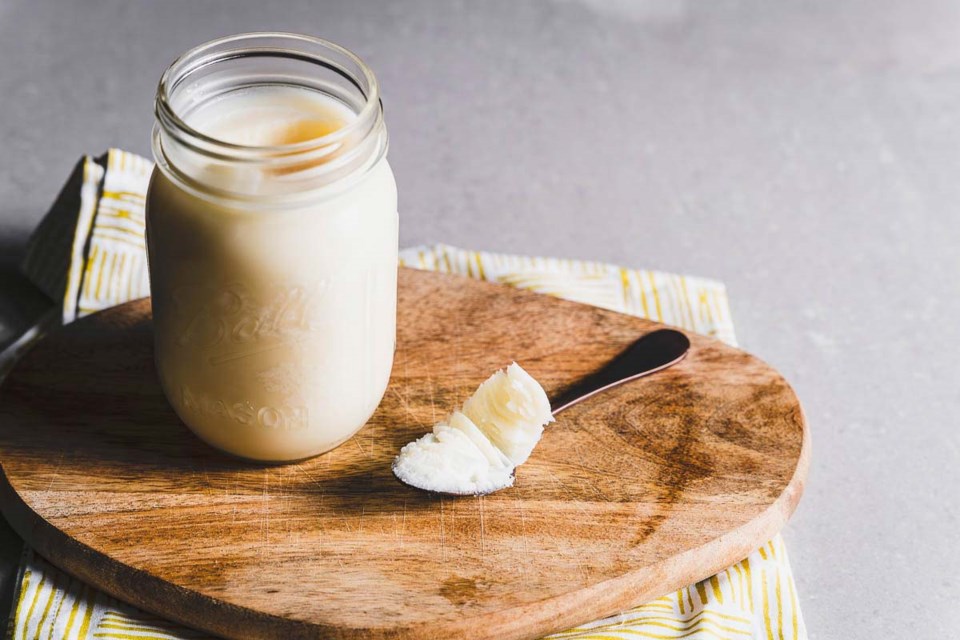Once a kitchen staple in the mid to late 20th century, beef tallow is back. This rendered beef fat is trending again, thanks to the rise of ancestral diets such as Paleo, nose-to-tail eating, social media, and a growing appreciation for traditional fats.
But is beef tallow actually good for you, or is it just another social media fad? Let’s break it down.
4 Health benefits of beef tallow
Unlike heavily processed vegetable oils, beef tallow is a natural fat with a surprising range of health benefits:
- Rich in healthy fats: Beef tallow is high in monounsaturated fats, the same kind found in olive oil, which support heart health by improving cholesterol balance and reducing inflammation.
- Packed with fat-soluble vitamins: Tallow contains vitamins A, D, E, and K—all essential for immune function, bone health, and skin nourishment. Since these vitamins need fat for absorption, tallow delivers them in an ideal form.
- Supports metabolic and brain function: The saturated fats in tallow provide a stable source of energy, helping to keep blood sugar levels steady and reducing energy crashes. These fats are also crucial for brain health, as they contribute to the structure of brain cells.
- Promotes skin health: Tallow is incredibly similar to the natural oils found in human skin, making it a popular ingredient in natural skincare. It hydrates, protects, and helps repair the skin barrier.
How to use beef tallow in cooking
Beef tallow isn’t just for deep-frying—though it does make some of the crispiest, most flavourful fries. Here are a few simple ways to use it in everyday cooking:
- Sear meats & vegetables: Use a spoonful of tallow to sear steaks, roasts, chicken, or even roasted vegetables for a rich, deep flavour.
- Make flaky pie crusts: Swap out butter or shortening for tallow in pie crusts and pastries for a crisp, flaky texture.
- Fry eggs or potatoes: Cook your morning eggs in tallow for a delicious, nutrient-rich breakfast, or use it for perfectly crispy and golden hash browns.
- Use in homemade bone broth: A spoonful of tallow adds a boost of healthy fats and enhances the richness of homemade broths and soups.
- DIY skincare balm: If you're feeling adventurous, whip up a natural tallow balm for ultra-hydrating skin care.
Should you make it yourself, or buy beef tallow?
Deciding whether to render beef tallow at home or purchase it pre-made depends on your preferences for time, effort, and quality.
Making beef tallow at home
Rendering tallow yourself allows you to control the process and ensure a pure, additive-free product—and it’s super easy to do! The process involves slowly melting down beef fat trimmings over low heat, then straining it to remove leftover beef fat hunks and impurities.
Buying pre-made beef tallow
For those short on time or not inclined to save and render fat, purchasing high-quality, grass-fed beef tallow is a convenient alternative. Many reputable sources offer ready-to-use tallow, ensuring you get a clean product without the effort. This option is especially appealing if you’re new to using animal fats or prefer to focus on cooking rather than preparation. Just ask your local butcher or inquire at your grocery store. When in doubt, order locally online!
Surprisingly Easy DIY Beef Tallow
Rendering beef tallow at home is surprisingly easy and requires just one ingredient:
You’ll Need:
- 2 lbs beef fat (ask your butcher for suet or trimmed fat from grass-fed beef and start saving and freezing it anytime you prepare beef and cut the fat trimmings.)
Instructions:
- Cut the beef fat into small pieces (option to grind it for faster melting, but not necessary).
- Place it in a slow cooker or a heavy pot on low heat either in your stovetop or in the oven.
- Let it slowly melt over several hours, stirring occasionally.
- Strain the liquid fat through a fine mesh sieve or cheesecloth into a glass jar.
- Let it cool and solidify. Store in the fridge for months or freeze for even longer.
About the Author

Alicia is a journalist and editor in digital and print media specializing in health, nutrition, fitness, and wellness. She was previously the Editorial Director of Clean Eating and Vegetarian Times. Her work has also appeared in Hone Health The Edge, Yoga Journal, Women’s Running, and Oxygen, among others. In addition to being a content creator, she's an ISSA-certified nutritionist, certified personal trainer, and fitness studio owner in Toronto. Alicia loves spreading the word about helpful, science-backed health information, and she can be contacted via her website at aliciamtyler.com.




